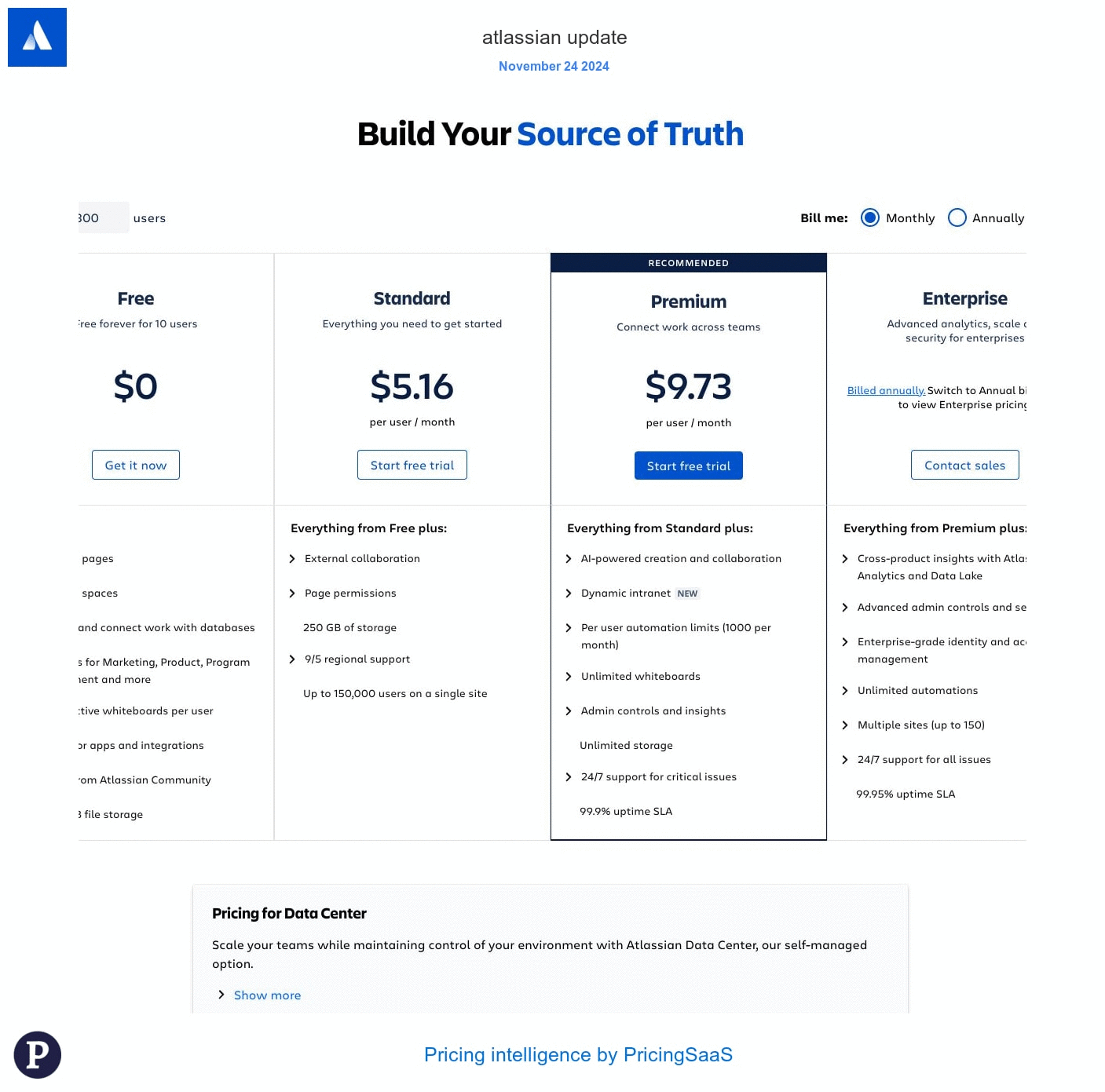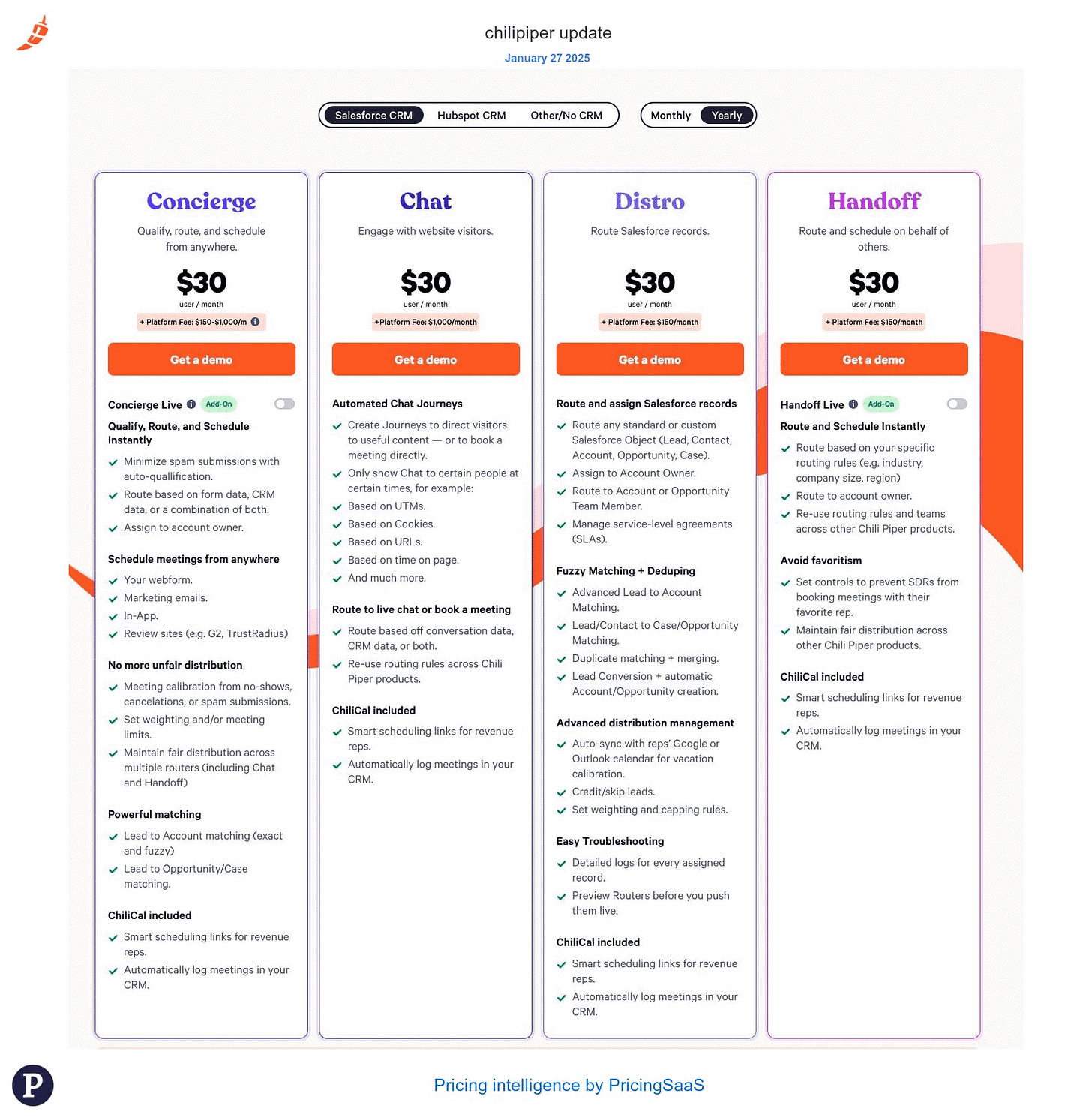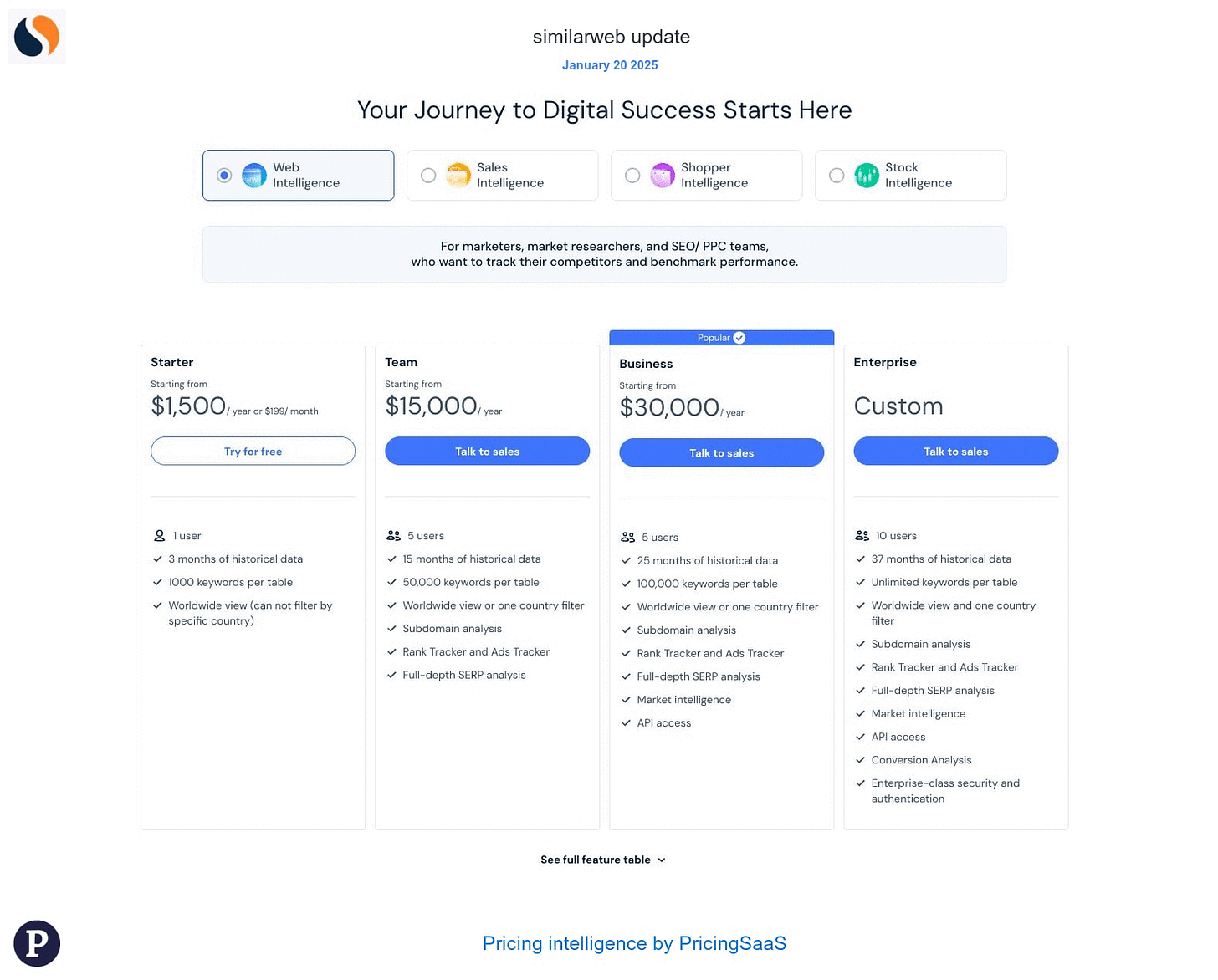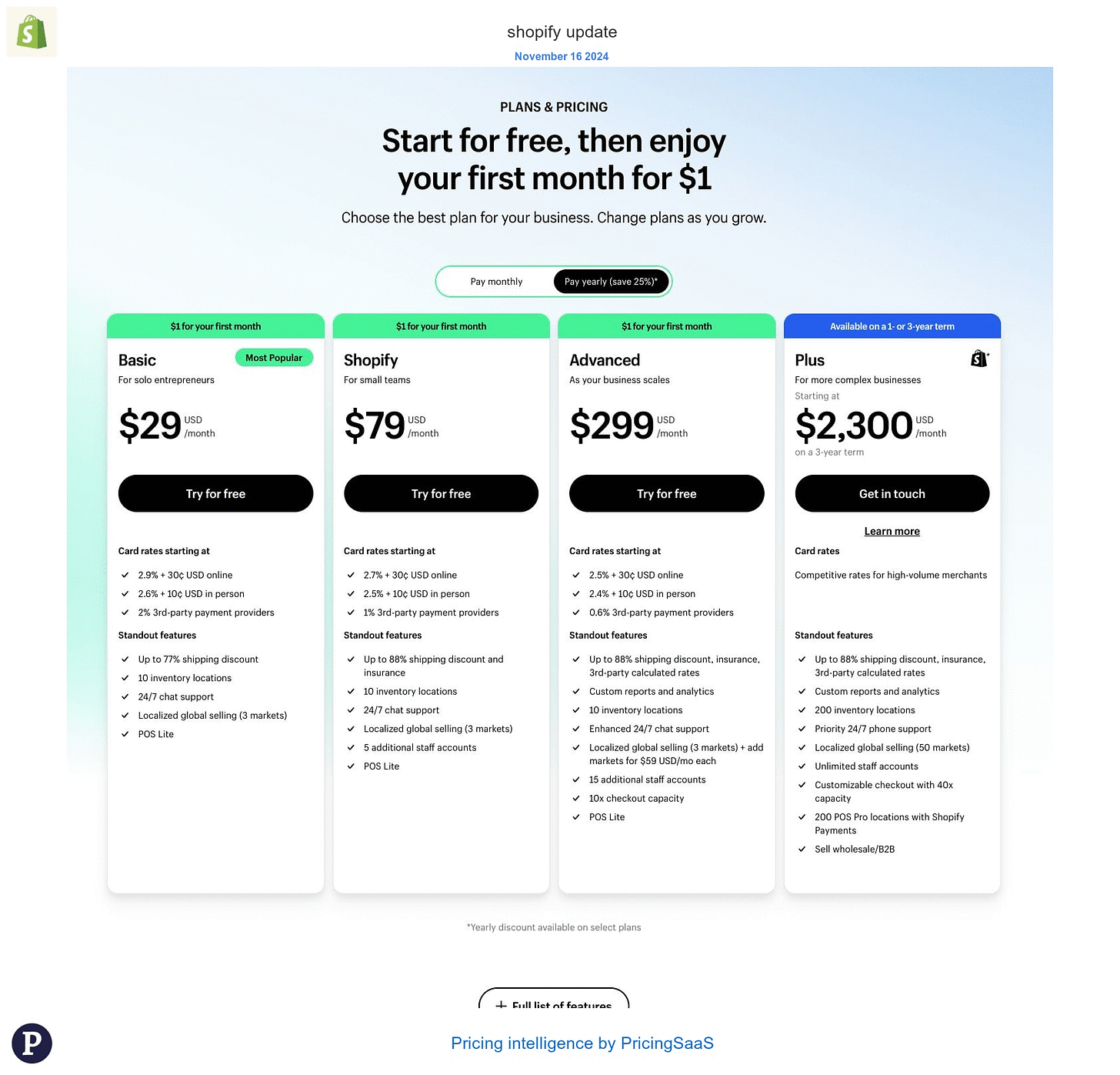January Roundup (20 Pricing and Packaging Updates)
Including: Updates from Confluence, ClickUp, and ChiliPiper.
Welcome back to Good Better Best!
This month marks 5 years since I started this newsletter. During that time, pricing and packaging has only become more important. The introduction of Generative AI has amplified the need for thoughtful pricing models, and we’re seeing seismic shifts in how SaaS leaders are commercializing products.
It’s an exciting time, and at PricingSaaS we have a front row seat. This month alone, we saw 100+ pricing changes in the PricingSaaS database. Today, we curated 20 of them to highlight some favorites.
Let’s get to it.
January Pricing Updates
We see hundreds of pricing changes every month. Below, we’ve collected 20 examples from January, categorized by Value Metrics, Feature Packaging, and Pricing. Enjoy!
Value Metrics ⏱
Confluence introduced “automation rule runs” across all plans, allowing 10 and 100 runs per month for the Free and Standard plans respectively, 1,000 runs per user/mo for the Premium plan, and Unlimited automations for the Enterprise plan. Automation rule runs help perform routine tasks in the background, and help move Confluence closer pricing on outcomes.
Clickup removed "Real-Time Chat" from the Free plan, and added "Unlimited Chat Messages" and "Unlimited Message History" to the Unlimited and Business plans, respectively. This move suggests they’re using chat to drive free-to-paid conversion.
PagerDuty introduced “incident type” limits across plans. The Free plan now includes access to Base and Major Incident Types, while the Business plan offers up to 3 Custom Incident Types, and the Enterprise plan provides up to 100. This creates a natural upgrade path for customers dealing with more incident complexity.
Voiceflow added concurrent voice call limits for all tiers. This adjustment creates a clear upgrade path based on usage volume, creating clear triggers for larger teams to upgrade to higher plans.
Renderforest introduced AI image credits for all plans. They also increased monthly prices for the Lite and Pro plans, but maintained an aggressive discount on Pro, suggesting a focus on driving adoption for that plan.
Zoho removed the "10 Read-only users" limit from the Premium plan on its BugTracker product, suggesting they're rethinking user definitions and limits.
Ahrefs adjusted limits on additional users, moving from “add up to” language to simply “add” language, suggesting they may offer flexible user additions going forward.
Feature Packaging 📦
ChiliPiper introduced "Handoff Live" to the Handoff plan and "Concierge Live" to the Concierge plan. Handoff is focused on routing a prospect to the right member of your sales team, while Concierge is focused on qualifying prospects. Concierge includes an additional fee of $10 per user/mo, and both offerings require a minimum platform fee of $1,000/mo. These Add-Ons allow Chili Piper to position their solution as more of an outcome-based product, and help increase ARPU.
Intercom made Fin AI Agent the centerpiece of the pricing page, signaling a shift in prioritization to AI Agent powered solutions.
Postman added Flows to the Free plan. Flows is an API Visualization tool that was previously a paid feature. This move is likely aiming to drive deeper usage among Free customers to eventually drive upgrades.
GetResponse repositioned its plans to user profiles rather than functionality. Previously, the plans were tailored to Email Marketing, Marketing Automation, and eCommerce Marketing. The new plans appeal to Marketers and Creators. They also introduced a slider to make configuring pricing easier for those personas.
Smartsheet introduced "Collections," a role-based sharing feature. This addition allows for more tailored collaboration within teams, and is only available to Enterprise customers.
Breezy HR added a "Custom Pro Plan," which builds on the Business Plan by adding exclusive features and a dedicated Account Manager. This suggests they're looking to serve larger customers with more expansive needs.
Lokalise enhanced its plans by adding "Analytics" to the Start plan, "Workflows" to the Pro plan, and "Advanced analytics" to the Enterprise plan, adding new value and creating clearer differentiation between its tiers.
CoSchedule enhanced paid plans by tripling the number of AI Project Templates, and adding AI Image Generation functionality, clearly positioning AI as a value driver.
Thinkific re-categorized features within each plan to showcase the value they provides across Sales and Marketing.
Pricing 🏷️
Similarweb updated its default setting to an annual price. They also adjusted plan names, features, and user limits for each plan.
Pinecone shifted from "Pay as you go" to a structured pricing model with a $25/month Standard plan, incorporating $15/month usage credits and free support, enhancing predictability for users.
Remote added a “fake discount” to the Payroll plan, increasing the fee from $29 to $35, but offering a discount back to $29 per month.
Employment Hero renamed its plans and shifted the pricing page to give each plan its own tab, while also adding new price points. This update allows them to provide more context for each plan, but makes it harder to compare each plan's features for a first-time visitor.
Bonus 🎁
Shopify added an email trial signup at the top of the pricing page, likely in an effort to make the page a more effective conversion tool. This doesn’t fit any of the categories above, but I love when companies test stuff like this, and had to include it 🙂
Thanks for tuning in and see you next week!
Have thoughts on this post? I’d love to hear them.







